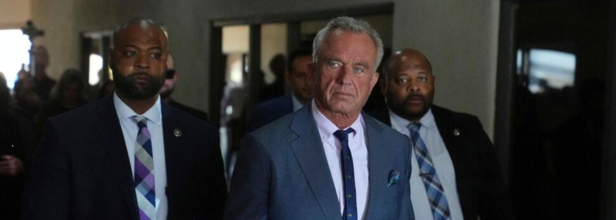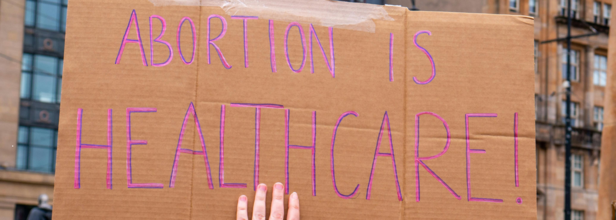
Credits: Canva
Know All About The Recently Approved Landmark Breast Cancer Drug In UK
Breast cancer is one of the most common cancers in the world, affecting millions of women every year. It begins when cells in the breast grow uncontrollably, often forming a lump or mass. There are several types of breast cancer, classified based on the presence or absence of hormone receptors or certain proteins that influence cell growth.
One of the most common forms is HR-positive, HER2-negative breast cancer. “HR-positive” means the cancer cells grow in response to hormones like estrogen or progesterone, while “HER2-negative” indicates the cancer does not produce excess amounts of the HER2 protein. This subtype accounts for a significant percentage of breast cancer cases and can be difficult to treat, especially in advanced stages when it spreads beyond the breast to other parts of the body.
A Landmark Moment: Capivasertib Approved for NHS Use
In a major step forward, a new drug named capivasertib has been approved for use in the UK’s National Health Service (NHS). Developed by pharmaceutical company AstraZeneca, the drug is also marketed as Truqap. This oral medication offers fresh hope to patients battling incurable forms of breast cancer, particularly those with specific genetic mutations.
The approval by the National Institute for Health and Care Excellence (NICE) has been hailed as a “landmark moment” by researchers. According to NICE, more than 1,000 women each year with HR-positive, HER2-negative breast cancer in advanced stages could benefit from this new treatment.
How Does the Drug Work?
Capivasertib is taken as a twice-daily pill, in combination with the hormone therapy fulvestrant. The drug works by blocking an abnormal protein—a part of the cancer cell’s signaling system—that tells the cells to multiply. By disrupting this signal, capivasertib slows or halts the progression of the disease.
In a clinical trial, the combination of capivasertib and fulvestrant was shown to delay cancer progression by approximately 4.2 months compared to patients who received a placebo and fulvestrant. This delay in disease progression could mean more time before needing chemotherapy and its often difficult side effects.
The Role of Genetic Mutations
About half of the patients with this form of breast cancer have mutations in certain genes, which make them more likely to respond to capivasertib. These mutations can be detected through genetic testing, which helps doctors decide the most effective course of treatment for individual patients.
How to Get Checked?
Early diagnosis remains key in managing breast cancer. Women are advised to regularly perform self-exams, attend routine screenings such as mammograms, and report any unusual symptoms to a doctor. For those diagnosed with HR-positive, HER2-negative cancer, genetic testing may be recommended to check for mutations that would qualify them for treatment with capivasertib.
A Decade-Long Research Journey
The approval of capivasertib is the result of decades of research by scientists at the Institute of Cancer Research (ICR) in London. Kristian Helin, CEO of ICR, called the development a “triumph,” noting the drug’s potential to improve treatment outcomes for many patients.
As of 2020, over 40,000 people were diagnosed with breast cancer in the UK, with nearly 15% already at advanced stages. For them, this drug could represent both hope and more time.

At 78, Trump Claims To Have Aced Cognitive Test With ‘Every Question Right’- Here’s What The Test Involves
In a country where the vitality of the president tends to serve as a proxy-in for credibility as a leader, President Donald J. Trump — now in his second term and the oldest president to hold office in U.S. history — is again making cognitive health the focal point of the nation's dialogue. Speaking on board Air Force One headed to West Palm Beach, the 78-year-old commander-in-chief made a public proclamation that he had "got every answer right" on a cognitive test administered during his annual check-up at Walter Reed Medical Center. "Good heart. Good soul. I felt I was in very good shape," said Trump, continuing that he went out of his way to take the test as a way of distinguishing himself from political rivals.
But what is this mental test actually — and what does it really tell us about a sitting president's mental acuity, particularly in the tough and high-wire job of Commander-in-Chief?
The president addressed openly to journalists on board during the trip to his home in West Palm Beach, Florida, assertively declaring, "I got every answer right." This comment has once again sparked public curiosity regarding the nature and importance of cognitive testing, particularly among aging political figures.
"I’m in very good shape — good heart, good soul, very good soul," President Trump told the White House press pool, emphasizing his physical and mental wellness. Not only did he point out the good results of his physical, but he also used the opportunity to differentiate himself from his political peers by mentioning that he took a cognitive test voluntarily — something he says his predecessors, former President Joe Biden and Vice President Kamala Harris, had declined to do.
This is not the first time President Trump has boasted about his cognitive abilities. In his last term, he made similar claims, even reciting memorable parts of the test like the now-famous phrase- "Man, Woman, Person, Camera, TV."
What Is the Cognitive Test Trump Took?
The test in question is the Montreal Cognitive Assessment (MoCA), a standardized screening tool developed in 1996 by neurologist Dr. Ziad Nasreddine. It’s widely used to detect mild cognitive impairment and early signs of Alzheimer's disease. Despite its simplicity for cognitively healthy individuals, the test is a powerful tool in neurological diagnostics.
MoCA tests several areas of brain function such as memory, attention, language, visuospatial abilities, and executive functions. It takes about 10 minutes and is commonly utilized by neurologists and primary care physicians to screen for cognitive impairments in persons aged 65 years and older.
President Trump claimed that he got every question correct — and for a cognitively healthy person, that is what is expected. But what is the MoCA, and are its last questions as hard as Trump claims?
1. Visuospatial and Executive Function Tasks
The test starts with a series of drawing exercises that involve:
- Drawing a clock indicating a particular time, e.g., 10 past 11.
- Copying a three-dimensional cube.
These exercises assess spatial knowledge, attention, and planning abilities — tasks that can decline with age or neurological deterioration.
2. Identification and Naming
These are illustrated animals — often a lion, camel, and rhinoceros — and participants are requested to identify them. This task appears straightforward but can be sensitive to problems with recall of language or semantic memory.
3. Delayed Recall and Memory
One of the more difficult sections of the test is when subjects are required to recall a series of five unrelated words. Later in the test, they are required to recall these same words without cues. This delayed recall section often uncovers early memory lapses.
4. Attention and Language Repetition
In the following section, items involve the repetition of strings of numbers forward and backward and simple subtraction items (e.g., subtract 7 from 100 consecutively). This assesses working memory and attention.
5. Verbal Fluency and Abstraction
Here, the subjects are required to say as many words as possible beginning with the letter "F" within 60 seconds. Subsequently, they have to describe similarities of two things — for example, how a train and a bicycle are similar (both are means of transport).
6. Orientation
The last section of the test tests an individual's sense of time and place — requesting that the subject give the present date, day of the week, month, year, and place.
How Difficult Is It, Really?
When asked about the difficulty of the test, Trump said, "I'll bet you couldn't even answer the last five questions. They get very hard." While certain sections, such as delayed recall and abstraction, may be challenging for people with early indicators of cognitive impairment, experts explain that the test is not intended to be excessively difficult for non-impaired individuals.
"The MoCA is not a test of intelligence," explains Dr. Sarah Williams, a Johns Hopkins Medicine neurologist. "It's intended to screen for very subtle indicators of cognitive decline. If you are cognitively normal, it will be very easy."
Cognitive Testing and Presidential Transparency
Trump's insistence on taking cognitive testing is less about boasting rights — it is also a sign of larger public anxieties surrounding aging leaders and their cognitive abilities. With both leading presidential candidates now over their late 70s and early 80s, mental sharpness issues have become an overarching theme in American politics.
Trump’s repeated willingness to undergo and publicize the results of cognitive testing could be interpreted as a strategic move to address those concerns head-on. “The American people want a mentally sharp president,” he said. “I think I’ve proven that.”

RFK Jr. tours the Native Health Mesa Food Distribution Center in Mesa, Ariz. (AP Photo/Ross D. Franklin)
What Happened to ‘Healthy Tribes’? RFK Jr.’s Visit Sparks Concern Amid Cuts To Native Health Program
During a recent visit to tribal communities in Arizona and New Mexico this week, US Health Secretary Robert F Kennedy Jr emphasized the importance of preventing chronic disease among the Native American and Alaska Native population. Is it targeting them? Because behind the scenes, a crucial health initiative that had long served those very communities is being dismantled. This will leave many tribal leaders alarmed and confused.
The initiative in question, Healthy Tribes, was part of the Centers for Disease Control and Prevention (CDC) and allocated $32.5 million annually to support culturally grounded programs focused on chronic disease prevention through traditional foods, medicine, and community engagement. As of early April, the program was also gutted due to workforce reductions at the CDC. Emails to tribal health organizations also confirmed that positions central to administering Healthy Tribes were in fact, being eliminated.
A Silent Rollback That Said A Lot
Kennedy’s public appearances, including a hike with the Navajo Nation president and a visit to a Native health center in Phoenix, made no mention of the program’s fate. He also moderated a panel at the Tribal Self-Governance Conference but avoided public questions. While he has said Native health is a top priority, his silence on the abrupt restructuring of Healthy Tribes has drawn criticism.
Tribal leaders now fear the rollback is part of a broader effort by the Trump administration to dismantle diversity, equity, and inclusion (DEI) initiatives. However, Native leaders have pushed back against being categorized as such, asserting that tribal support is a legal obligation under treaties and federal law—not a diversity measure.
'A Violation of Trust'
The federal government has a trust responsibility to tribal nations, which includes ensuring access to healthcare, education, and public safety. Leaders like W. Ron Allen of the Jamestown S’Klallam Tribe call the recent cuts “a violation of trust.” He said he reminded Kennedy during their private conversation that tribes are already underfunded and rely heavily on supplementary programs like Healthy Tribes.
One of the key concerns is the lack of tribal consultation—a legal requirement for federal actions affecting Native communities. Tribes were not consulted before the layoffs, echoing similar frustrations after mass terminations at the Indian Health Service earlier this year were temporarily rescinded following backlash.
What Is The Ground-Level Reality?
For tribal health facilities, these cuts have an immediate and grave implications.
For instance, in Seattle, Healthy Tribes funded GATHER. This was a program that blended traditional medicine with modern care. Plants from community gardens were also used in this treatment, and traditional healers worked alongside clinical staff. However, now, he communication with the grant administrators has been broken down.
In Los Angeles, Healthy Tribes funds youth-elder mentorship programs among Native and Alaska Native communities. The abrupt staffing changes have left administrators unclear about how or if these initiatives will at all continue.
Native leaders stress that their status is political, not racial, a key legal distinction. “We are not DEI,” said Gila River Indian Community Governor Stephen Roe Lewis, warning new federal officials against viewing tribes through a racial equity lens rather than honoring treaty-based obligations.
For now, tribal communities remain in limbo—concerned that Kennedy’s words on improving Native health aren’t matching federal actions that could ultimately set them back.

Credits: Canva
Amid Changing Health Laws In The US, Would Abortion Become Illegal?
Kristan Hawkins, who is the head of the national anti-abortion group Students For Life, is used to protests from abortion rights supporters during her college campus tours. However, she is now also facing opposition that too from a surprising source — other anti-abortion activists.
These critics call themselves abortion abolitionists. They have started to show up at Hawkin's events. They also accuse her for being too soft, and calling her a "baby killer". They are now demanding harsher penalties for women who get abortions. Due to the rising tensions, Hawkins has had to increase security and even send alerts to donors to help cover costs. As the Associated Press reports, she now also knows the price of a bomb dog.
Why Abortionists Want Criminal Charges For Women?
Abortion abolitionists believe abortion is murder—and should be treated that way under the law. Unlike mainstream anti-abortion groups, which typically target abortion providers, abolitionists want women who get abortions to be prosecuted, even sentenced to death in some cases. They’ve gained momentum since Roe v. Wade was overturned in 2022 and Republicans took full political control last year.
As of in 2025, lawmakers in 12 states, including Alabama, Georgia, Texas and Oklahoma have introduced bills that would allow prosecutors to charge women with homicide for abortions. Though most of these bills have not been passed, the fact that they are being considered shows the influence of abolitionists on abortion rights and health laws in general.
The Division Between The Anti Abortion Movement
Mainstream anti-abortion groups have tried to play down the divisions, focusing on shared goals like defunding Planned Parenthood. But many leaders are growing alarmed at the aggressive tactics and rhetoric coming from abortion abolitionists.
Hawkins herself posted on X in February that she’s more afraid of being attacked by fellow anti-abortion activists than by abortion rights supporters. The backlash was swift: She was called a “demon” and “enemy of God,” and some demanded she resign. Some even said women like her shouldn’t be leading anti-abortion groups at all.
Christian nationalist influencers have also amplified these voices. One podcaster blamed feminism for abortion, saying Christian men should lead the fight.
Experts like Laura Hermer, a law professor in Minnesota, say the fall of Roe has emboldened the most extreme voices. And they’re starting to shape policy.
What All Abortion Bills The US Has Seen?
- In Alabama, lawmakers have proposed a bill recently that could classify abortion as murder.
- In Georgia, a bill with nearly two dozen Republican co-sponsors would make abortion from the moment of fertilization a homicide.
- Similar bills have also been introduced in Kentucky, Missouri, and other states.
A 2022 KFF poll showed that around 80% of Americans oppose laws that would punish women for having abortions. However, Dana Sussman from Pregnancy Justice tells a media outlet that the number of such bills is rising sharply. What once sparked outrage is now becoming normalized.
Some lawmakers and advocates within the anti-abortion movement are pushing back. In North Dakota, a bill to prosecute women failed after major anti-abortion groups voiced opposition. In Oklahoma, a similar bill also died—but its co-sponsor, Sen. Dusty Deevers, said he plans to keep pushing for it, calling it “progress.”
Hawkins said the movement is now split into three groups:
- Those who want to prosecute women,
- Those who firmly oppose it,
- And those who don’t support it now but think that might change in the future.
She places herself in the third category, saying the focus should be on shifting culture and law gradually—not punishing women. “If you want more pro-abortion Democrats to win elections, then keep talking about putting women in jail,” she warned.
© 2024 Bennett, Coleman & Company Limited

